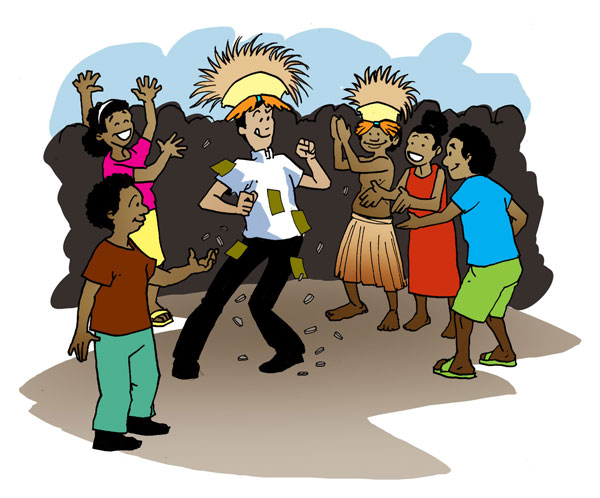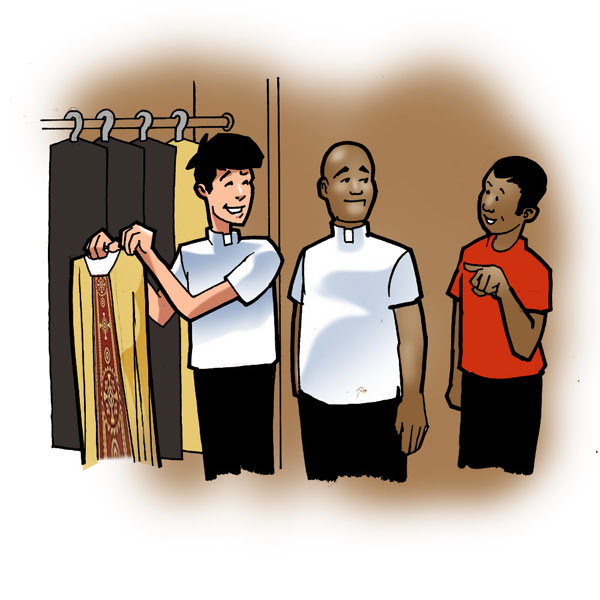July-August 2009
Pulong ng Editor
The Negros Nine Live On
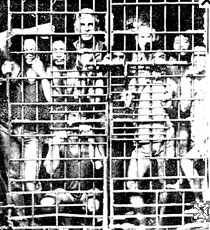
In 1983 three priests and six lay workers in Kabankalan, Negros Occidental, were charged with multiple murder. Over the next 14 months of trial and imprisonment they become known worldwide as ‘The Negros Nine’.
These trumped-up charges were meant to stop the work of the Basic Christian Communities (BCC) in which the Nine had been among the forerunners in Negros. The goal of the BCCs or the Kristiyanong Katilingban (KK) was the non-violent transformation of Negros society through total human development...
A ‘Negros Nine Baby’
 As I was only two at the time, I have only vague memories of my father being imprisoned together with eight other members of the ‘Negros Nine’ due to false accusations. Ironically however, they are happy ones, maybe because my parents made great efforts to be optimistic and hopeful amidst the situation. So, even if I did not fully understand, I felt everything would be fine...
As I was only two at the time, I have only vague memories of my father being imprisoned together with eight other members of the ‘Negros Nine’ due to false accusations. Ironically however, they are happy ones, maybe because my parents made great efforts to be optimistic and hopeful amidst the situation. So, even if I did not fully understand, I felt everything would be fine...
Faith Of A Woman
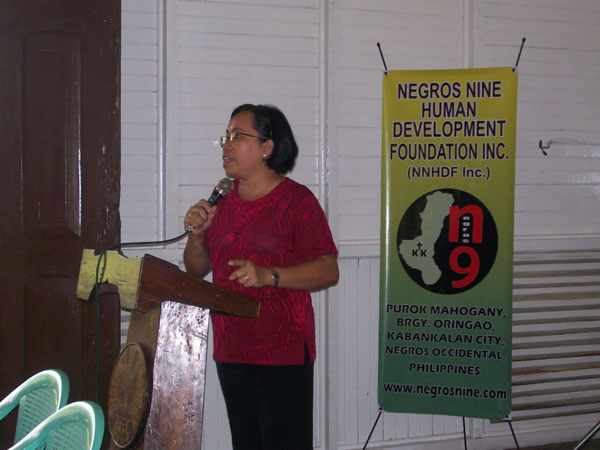 On 10 March 1982 news broke about the murder of Mayor Pablo Sola of Kabankalan in an ambush. Many rumors were heard but we didn’t expect that three priests and six lay leaders actively involved in the building of Basic Christian Communities, Kristianong Katilingban, would be accused.
On 10 March 1982 news broke about the murder of Mayor Pablo Sola of Kabankalan in an ambush. Many rumors were heard but we didn’t expect that three priests and six lay leaders actively involved in the building of Basic Christian Communities, Kristianong Katilingban, would be accused.
At first, I didn’t bother, for I knew my husband Conrado and the priests weren’t responsible for such a crime but I was surprised when a group of uniformed military men arrived and surrounded our house...
What Makes Her Life Worthwhile
Way back then, brought up in a traditional Catholic family , she became a teacher in a two Columban parochial primary schools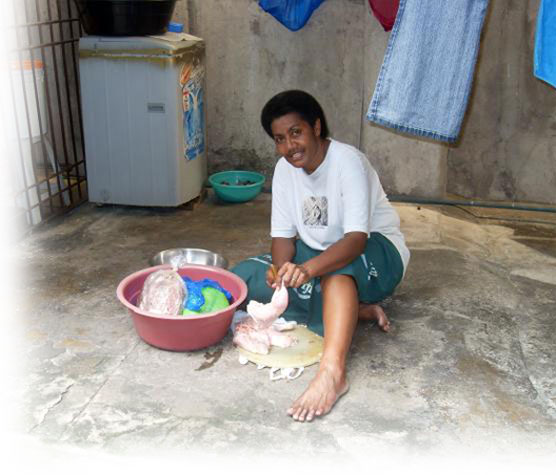 for seven years, and taught at a school run by Missionary Sisters of the Society of Mary (SMSM) for four years. She was a sportswoman and once represented her country in an international netball competition. Her life then was divided between sports and teaching.
for seven years, and taught at a school run by Missionary Sisters of the Society of Mary (SMSM) for four years. She was a sportswoman and once represented her country in an international netball competition. Her life then was divided between sports and teaching.
Serafina liked sports, going out with friends, had a boyfriend, but found something more meaningful in lay mission...
Stephen Cardinal Kim Sou-Hwan RIP
On Monday 16 February at 6.12pm Cardinal Kim died in St Mary’s Hospital, Seoul. Within an hour the crowds were gathering at the Cathedral to receive the body which arrived at 9.30pm. Beginning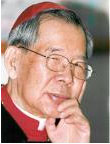 that night and during the following three days over 400,000 people filed past the coffin to pay their respects. It was an unprecedented display of affection and respect for the man they called the ‘kun orun’ (literally the ‘great elder’). People of all religious persuasions, young and old alike, came to see him for the last time. The cathedral was full and the church yard was overflowing for the funeral on the Friday the 21st which was broadcast live on all the networks...
that night and during the following three days over 400,000 people filed past the coffin to pay their respects. It was an unprecedented display of affection and respect for the man they called the ‘kun orun’ (literally the ‘great elder’). People of all religious persuasions, young and old alike, came to see him for the last time. The cathedral was full and the church yard was overflowing for the funeral on the Friday the 21st which was broadcast live on all the networks...
In Memory Of Cardinal Kim Suhwan
A poem of remembrance by Fr Kevin O'Rourke...
‘Expectant Faith’ And Sincere Prayer
I boarded air-conditioned OA Travel and Tour bus no AS54392H in Accra, capital of Ghana, bound for Techiman on 29 October 2007.
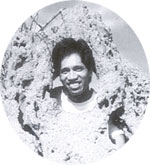 Just a few minutes before we left at 9:45 in the evening, a stocky man in a red T-shirt standing in the center aisle, requested in full confidence all passengers to be silent. Then he started praying so fervently in a plethora of words that I could feel everyone was deeply moved. After a lengthy prayer, he finally ended, looking from the back to the front seats and again from the front to the back seats, obviously expecting donations or ‘love offerings’. Seeing no action, he reluctantly turned toward the door with a rather long face...
Just a few minutes before we left at 9:45 in the evening, a stocky man in a red T-shirt standing in the center aisle, requested in full confidence all passengers to be silent. Then he started praying so fervently in a plethora of words that I could feel everyone was deeply moved. After a lengthy prayer, he finally ended, looking from the back to the front seats and again from the front to the back seats, obviously expecting donations or ‘love offerings’. Seeing no action, he reluctantly turned toward the door with a rather long face...
Dialogue Of His Holiness Benedict XVI With The Children Of The Pontifical Society Of The Holy Childhood
First Question:
My name is Anna Filippone, I am 12 years old, I am an altar girl and come from Calabria, Diocese of Oppido Mamertina-Palmi. Pope Benedict, my friend Giovanni has an Italian father and an Ecuadorian mother and is very happy. Do you think that one day the different cultures will be able to live together without quarrelling in Jesus' name?...
International Meeting On WYD
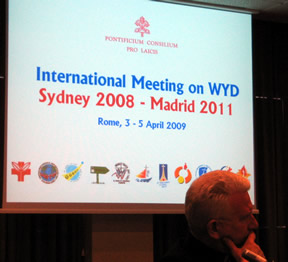
Being based in Italy I was asked to represent the Teresian Association at the first international meeting organized by the Pontifical Council for the Laity (PCL) in preparation for the Madrid World Youth Day (WYD) in 2011, held in Rome from April 3 to 5. Representatives from 70 countries and 30 international Catholic communities, associations and movements, and the organizing committees of Sydney and Madrid came to take part in the meeting to assess the WYD in Sydney and to start planning for Madrid...
Our Cover Story -- July-August 2009

Our cover shows the Negros Nine Logo bearing the map of Negros with the initials ‘KK’ which stand for Kristianong Katilingban, the cross signifying Catholicism. Behind is the photo of the Negros Nine members taken sometime in 1983 when they were in prison during Martial Law.
‘The story of the Negros Nine symbolizes the struggle of the poor for a better life in a safe and sustainable environment, ie, “total and integral human development.”’ The 25th anniversary of the release of the Negros Nine on 3 July 1984 will be celebrated with a Mass and program in Kabankalan City on 2 July.
Ask your students, ‘What is being evoked in the picture? What stories are you reminded of when we speak of Martial Law?’
A ‘Negros Nine Baby’
By Cecille Muhal
The author is a nurse working in Cebu.

While my father stayed in jail, my mother left my younger sister in the care of my grandparents while I lived in the home of a close family friend. Each visit to the jail was a reunion for my family, like a vacation to be looked forward to.
There was a time when I got to stay in the jail for almost a week, though I didn’t know why I was allowed to, and experience life in prison first-hand. My father and I would sleep in a small wooden bed at the corner of the cell where walls were covered with newspaper. There was a small bedside table with some reading material. Our clothes were inside a bag placed under the bed. In the morning, we would share the food rationed by the jail management and my father would help me take a bath in a small comfort room-cum-washing area. Then, he would let me play or have a chat with other prisoners, guards, vendors and visitors. I made a lot of friends and even got a miniature boat placed inside a bottle with the inscription M/V Cecilia from one of the prisoners as a souvenir.
Tatay would tell stories for me to sleep at night and having a bed was a little ‘luxury’ as others had only a banig (local woven mat) on the floor on which to sleep. When people came to visit, my father would ask me to sing and dance for them, which I enjoyed very much. My uncle even bought a cassette player for a greater effect. I even got a prize if lucky. Sundays were special too as Mass was celebrated in the open grounds of the jail. I got to mingle with a lot of prisoners and their visiting families and it brought me into a deep connection with them and their predicament. In fact, when I was an undergraduate in BS Nursing, our group made a descriptive study on the common health problems and medical services available among the inmates of Negros Occidental Provincial Jail in Bacolod City, the same jail where my father had been imprisoned. I believe that medical attention should be given even to the outcasts of society, and not only within the confines of the hospital. I hope that our collected recommendations were taken into consideration by the jail’s management.
The experience of being locked in the cell made me realize and appreciate the value of freedom and how every visit of a loved one or of a friend was treasured, how every word of encouragement brought hope, how food being shared gave strength to face yet another day of the battle for justice for the lives of those in prison. It also made me and my family stronger. The separation and struggles made us closer and helped us value the times we spent together.
The things my father fought for and the principles he believed in still remain these many years after his release and that of his companions with the institution of Negros Nine Human Development Foundation, Inc. headed by Father Brian Gore together with the remaining living members of the Negros Nine and others who believe in their ideals.
Though my father left us early due to cancer in 1990, I get to see how he lived through the stories of people whose lives he touched and whom he inspired. I can never be more proud of being his daughter and a ‘Negros Nine baby’.
You may email the author at cecille_muhal@yahoo.com
DIALOGUE OF HIS HOLINESS BENEDICT XVI WITH THE CHILDREN OF THE PONTIFICAL SOCIETY OF THE HOLY CHILDHOOD
Paolo VI Hall
Saturday, 30 May 2009
Pope Benedict is a teacher and on quite a few occasions since becoming pope has engaged in question-and-answer sessions, usually with priests but twice with children. On 30 May he answered three questions put to him by children of the Pontifical Society of the Holy Childhood.
First Question:
My name is Anna Filippone, I am 12 years old, I am an altar girl and come from Calabria, Diocese of Oppido Mamertina-Palmi. Pope Benedict, my friend Giovanni has an Italian father and an Ecuadorian mother and is very happy. Do you think that one day the different cultures will be able to live together without quarrelling in Jesus' name?
I have gathered that you all would like to know how we, from the time we were children, have managed to help one another. I must say that I spent my elementary school years in a small town of 400 inhabitants, very far from the big city centres. Therefore we were a bit ingenuous, and in this small town there were, on the one hand, very rich farmers and also others who were less rich but still well-off, and on the other, poor workers, artisans. Our family had moved from another town to this one just a little before I began going to elementary school, thus we were in a way foreigners to them, as even our dialect was different. So, there was a wide range of social situations present in this school, but a beautiful communion prevailed among us. They taught me their dialect, which was new to me. We worked well together. Although, naturally enough, we would argue sometimes but afterwards we would make up and forget what had happened.
I think this is significant. Sometimes in life it seems inevitable to argue; but the art of reconciling with each other remains important forgiving, beginning anew and not letting bitterness linger in the soul. With gratitude I remember how everyone co-operated: each one helped the other and we moved ahead together on our path. We were all Catholic, and this was naturally a great help. In this way we learned together to understand the Bible, beginning with the Creation and continuing to the sacrifice of Jesus upon the Cross, and then also of the beginnings of the Church. We learned the Catechism together, we learned how to pray together, we prepared together for our First Reconciliation, for First Communion: that was a splendid day. We understood that Jesus himself came among us and that he is not a distant God: he enters into my own life, my own soul. And if the same Jesus enters into each one of us, then we are brothers, sisters and friends and therefore we must behave as such.
For us, both this preparation for First Reconciliation as the purification of our consciences, of our lives, as well as that for First Communion as a real meeting with Jesus who comes to me, who comes to each one of us, were factors that contributed to the formation of our community. They helped us to move ahead together, to learn together to forgive each other when necessary. We also put on little plays: it is important to collaborate, to pay attention to each other. Then when I was about eight or nine years old I became an altar boy. At that time there were not yet altar girls, but the girls read much better than we did. Therefore they read the readings during the liturgy while we filled the role of altar servers. During that period there were still many Latin texts to learn, and so each one had to make a special effort. As I said, we were not saints. We had our arguments, but there was still a beautiful communion, in which the distinctions between rich and poor, between the more and the less intelligent did not matter. It was communion with Jesus in the journey of common faith and common responsibility, in our games, in our shared work. We found the way to live together, to be friends, although I have not been in that town since 1937 that is, more than 70 years ago we have remained friends. Thus we have learned to accept one another, to carry one another's burdens.
I find this significant: despite our weaknesses we accept each other and with Jesus Christ, with the Church, we find a path of peace together and learn to live in the best way.
Second Question:
My name is Letizia and I wanted to ask you a question. Dear Pope Benedict XVI, what did the motto: ‘Children help children’ mean for you when you were a boy? Did you ever imagine you would become Pope?
To tell the truth, I would never have thought of becoming Pope, because, as I have already said, I was a fairly ingenuous boy in a small town far from the city centres, in a forgotten province. We were glad to be in this area and we did not think of other things. Naturally we came to know, venerate and love the Pope Pius XI at the time but for us he was a very august figure, almost in another world: our spiritual Father, but nevertheless a reality much superior to all of us. And I must say that still today I have difficulty understanding how the Lord could have thought of me, destined me for this ministry. But I accept it from his hands, even if it is something surprising and that seems to me to be far beyond my strength. But the Lord helps me.
Third Question:
Dear Pope Benedict, my name is Alessandro. I wanted to ask you: you are the principal missionary; how can we children help you to proclaim the Gospel?
I would say that the first way is this: to collaborate with the Pontifical Society of the Holy Childhood. That way you are part of a large family, which takes the Gospel to the world. That way you belong to a large network. In it we see how the family of diverse peoples is represented. You are all in this big family: each one has his part and together you are missionaries, bearers of the missionary work of the Church. You have a beautiful plan, laid out by your spokesperson: to listen, pray, understand, share, sympathise. These are the essential elements that combined are truly a way to be missionaries, to encourage the growth of the Church into the future and the presence of the Gospel in the world. I would like to emphasize some of these points.
First of all, pray. Prayer is a reality: God listens to us and, when we pray, God enters into our lives, he becomes present among us, works among us. Praying is a very important thing that can change the world, because it makes the power of God present. And it is important to help each other by praying: to pray together in the liturgy, to pray together in the family. And here I would say that it is important to begin the day with a small prayer and also to end the day with a small prayer: to remember our parents in prayer. Pray before lunch, before dinner and during Sunday's shared Celebration. A Sunday without Mass, the great communal prayer of the Church, is not truly a Sunday: it lacks the very heart of Sunday and so also the light for the week. And you can also help others especially those who do not pray at home or do not know about prayer by teaching others to pray: praying with them and in this way introducing others to communion with God.
Next, listen that is, learn what Jesus really says. In addition, get to know the Sacred Scriptures, the Bible. In the story of Jesus we learn as the Cardinal said the Face of God, we learn what God is like. It is important to know Jesus deeply, personally. That way he enters into our life and, through our life, enters into the world.
Also, share, do not want things only for yourselves, but rather for everyone; divide things with others. And if we see that another is perhaps in need, that he or she is less gifted, we must help that person and so make God's love present without too many words, in our own personal world, which is part of the bigger world. And in this way we become a family together, in which each one has respect for the other: tolerating the other's differences, accepting also those who are disagreeable, not allowing anyone to be marginalized, but instead helping others to integrate into the community. All of this simply means living in this big family of the Church, in this big missionary family. To live out essential points such as sharing, knowledge of Jesus, prayer, reciprocal listening and solidarity is missionary work, because it helps to make the Gospel a reality in our world.
Faith Of A Woman
By Nomy T. Muhal
Mrs Muhal is principal of Magballo Catholic High School, Kabankalan City, Negros Occidental.
 On 10 March 1982 news broke about the murder of Mayor Pablo Sola of Kabankalan in an ambush. Many rumors were heard but we didn’t expect that three priests and six lay leaders actively involved in the building of Basic Christian Communities, Kristianong Katilingban, would be accused.
On 10 March 1982 news broke about the murder of Mayor Pablo Sola of Kabankalan in an ambush. Many rumors were heard but we didn’t expect that three priests and six lay leaders actively involved in the building of Basic Christian Communities, Kristianong Katilingban, would be accused.
At first, I didn’t bother, for I knew my husband Conrado and the priests weren’t responsible for such a crime but I was surprised when a group of uniformed military men arrived and surrounded our house. Captain Tortosa, their leader, came near our door and asked where my husband was. It happened that he wasn’t at home and thus after a while the group went away. That day was the beginning of our sleepless nights for we didn’t know what would happen next. Everyday thereafter military men were seen in the vicinity which led us a sense of chaos. Fear was everywhere. I wasn’t certain whether we would still be alive next day.
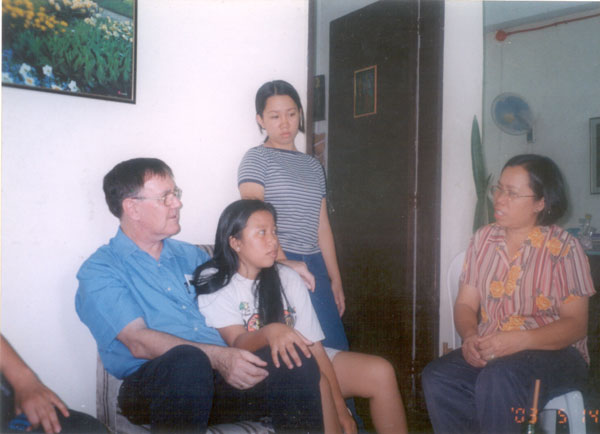
I had two children at this time, Cecille, two years and two months, and Ellainne, three months old. Though I was young then, what was on my mind was, ‘I know God is with us, for what we are doing is for the good of His people’.
It was 6 May, the feast of San Isidro, patron of Inapoy, part of the chaplaincy of Tabugon where Fr Niall O’Brien was assigned, and Father Gore, the six lay leaders and company attended the celebration. When my husband told me that they were going to Inapoy, I told him to take the necessary precautions, for news of impending arrests because of ambush was already being heard. My concern was not so much at the possibility of losing a husband but rather because of our children, still so small.
Information reached us early that afternoon of the arrest of Fathers O’Brien and Gore and of Conrado and the other five lay leaders at Inapoy and that they had been brought to the headquarters of the Philippine Constabulary (PC) in Kabankalan. Wives and other members of the community panicked but later decided to go to Kabankalan. Since my parents were residing in Oringao, a barrio of Kabankalan, I left my children with them. When we arrived at the PC headquarters we found many priests there and we had discussions with them about what we should do. This in a way consoled us but fear engulfed me, knowing that many church workers had already been ‘salvaged’ (murdered by representatives of the state). The group was later released after Bishop Antonio Y. Fortich of Bacolod asked that they be let out on bail. The day was a holiday and the group were arrested again the following Monday.
A marathon trial was held in Kabankalan and the prisoners transferred to Bacolod where they were imprisoned for twelve months. Many more things happened but I considered them part of the journey towards salvation, towards the Kingdom of God. As a wife and mother, I considered this a challenge to my faith and my strength. As the Bible says, Count it all joy, my brethren, when you meet various trials, for you know that the testing of your faith produces steadfastness (James 1:2-3). It is also through this that we become closer to God. Problems and trials make us weak but it is in our weak moments that we become strong for it is those moments that we remember our God.
I feel and believe that I am stronger now than I was before for I was able to accept wholeheartedly the passing away of my husband four years after The Negros Nine were set free and was able to support and nurture my four daughters. Rizalee and Stephanie were born after my husband came home. I do believe they too have become strong through this experience.
You may contact the author at 0441 Burgos St, Kabankalan City, 6111 Negros Occidental.
Consider it all joy, my brothers, when you encounter various trials, for you know that the testing of your faith produces perseverance (NAB).
Father Joeker
Dancing here is more than merely entertainment. It is life. You must dance to justify your existence. Once I was asked to dance. While I was doing so people started throwing money at me, while others pinned bills on my shirt, all coming to ¢300 (cedis). Then they asked me how much I had spent for gasoline. ‘¢300’, I said. Then they added ¢20 more. So there went my first Ghanian dance, worth ¢320. Any challengers?
Inside the catacomb of St Calixtus in Rome, our guide, an Italian lady who spoke impeccable English, announced, ‘Please stay with your group as there are so many unexplored corridors in these dungeons. As you can see, the fresh bones lying around belong to tourists lost a few years ago.’ Her announcement made our bones shiver.
One of the seminarians who spent his pastoral year with me was Dominic Nyarko Yeboah. In March 2008 he became the first bishop of the Diocese of Techiman in the Brong-Ahafo Region of Ghana. Quite late, during his ordination, I was rushing to the cathedral looking for a set of vestments. I was about to pick up one when Bishop Joseph Kwaku Afrifa-Agyekum of Koforidua spoke from behind, ‘Oh, Father, they’re for the bishops!’ Like a cat jumping off a hot stove, I leapt to the side where the vestments for priests were. ‘Wait your turn,’ said a confrere in consoling words.
In our house in Osonson, Ghana, there is no signal unless one climbs the school at the hill-top. Once at 10:00 in the evening, I was making a call under a cashew tree with my back to the nearby cemetery. Suddenly the strong wind from the north blew and I felt something like a cold hand touching my nape. I jumped at once instinctively thinking it was a ghost from the cemetery. Luckily I landed on the grass and not on a steep stone. Switching on my flashlight, I saw it was a leaf from the cashew tree. With a deep breath and laughter, I found myself cursing the leaf, forgetting the wind. The following morning, I trimmed the tree to avoid such a thing happening again.
In Memory Of Cardinal Kim Suhwan
A poem of remembrance
by Fr Kevin O'Rourke
Fr Kevin O’Rourke, a Columban from Ireland ordained in 1963, is professor of English at Kyunghee University in Seoul, Korea, and is the author of three books of Korean poetry in translation and is planning to produce an anthology from AD 668 to the present day.
Dust of snow,
a wind that chills to the bone,
pinched mourning faces,
collars raised, hats pulled low,
the shiver of death everywhere.
Cardinal Kim Suhwan
is lowered to his final resting place.
He brought forth simplicity,
a water simplicity that quickened
every root it touched.
He brought forth patience,
a medicament patience that salved
the wounds of the poor.
He brought forth compassion,
a loving compassion that embraced the world.
Simplicity, patience, compassion,
these three:
timber for a master carpenter,
clay for a master potter,
the hub of a master priest’s wheel.
“If you bring forth what is inside,
what you bring forth will save.”
International Meeting On WYD
Sydney 2008 – Madrid 2011
Rome, 3–5 April 2009
By Matet Gayondato
Being based in Italy I was asked to represent the Teresian Association at the first international meeting organized by the Pontifical Council for the Laity (PCL) in preparation for the Madrid World Youth Day (WYD) in 2011, held in Rome from April 3 to 5. Representatives from 70 countries and 30 international Catholic communities, associations and movements, and the organizing committees of Sydney and Madrid came to take part in the meeting to assess the WYD in Sydney and to start planning for Madrid.

The president of the Pontifical Council for the Laity, Cardinal Stanislaw Rylko, opened the meeting and reflections. He invited the participants to let themselves be ‘provoked’ by WYD making it a possible inspiration and guideline to address ordinary pastoral action in ministering to the young. But he emphasised that it is not a magic formula that will resolve the very arduous task of educating young people. He cited the letter of Benedict XVI on the urgent situation of education, a difficult task for all those who in different ways accompany young people in their human and spiritual growth. According to him ‘passion’ is the fundamental attitude in youth ministry, defining it as pastoral passion for young people.
Cardinal George Pell, Archbishop of Sydney, stated that the fruits of WYD in his city will remain and develop. A new light in thinking about Christ and the Church has taken over among those who are normally outside the church. An image of an engaging, open and alive church is emerging. He mentioned several times that working together for the WYD within the Church enhanced interaction, communication and dialogue among pastors themselves. The birth of youth groups and parish cooperation are among the blessings received by Church in Australia. The pastoral impact considered the pilgrims’ progress before, during and after WYD. We can say that the major impact is a major change in the sense of Catholic identity and sense of community. Bishop Anthony Fisher OP, auxiliary bishop of Sydney, noted the evangelical energy that has transpired from WYD reminding us that indeed we have been given the commission to shine. What is significant is pastoral renewal capitalizing on this new energy. The challenge is likewise a significant follow-up such as youth formation courses, retreats, youth camps, national gatherings and dialogue with youth leaders.
WYD brought together people who had never met before and created communion among Australian bishops. It restored faith among young people and confirmed the effectiveness of using artistic expression in announcing our faith. Father Eric Jacquinet, head of the Youth Section of the PCL, moderated the discussion on the pastoral aspect.
On Friday afternoon a panel talked on the impact of WYD on the Church in various countries. Sr Eileen McCann CSJ, Coordinator for Youth and Young Adult Ministry for the Secretariat for Family, Laity, Woman, and Youth for the United States Conference of Catholic Bishops, shared that church ministry is growing and youth ministry is strong at the national level. The focus is empowering young adults to witness Christ in the world of work. Towards Madrid, the intention is to reach out to the Hispanic young adult population of the USA and to work on preparatory catechesis. In the Church in Burundi the National Cross is lived as an event of young people according to Fr Salvator Niciterete. Jesus reconciled us in the cross and for a country marred by war it is imperative to work for reconciliation. Youth days are celebrated in regional and at national level with representatives from neighboring countries. The presence of the apostolic nuncio means contact with the universal church.
WYD as a major youth event for the Church in Asia was shared Joy Candelario from the Youth Desk of the Federation of Asian Bishops Conference office of the Laity and the Family. Asian Youth Day is vital in giving voice to the young people of Asia, especially from socialist countries where Catholics are a minority, to celebrate our faith. It is also a venue to work out interreligious themes, follow-up sessions on community building and a common plan of action.
The second day of the meeting was dedicated to WYD 2011 which will be held in Madrid. Cardinal Antonio Maria Rouco Varela, the Archbishop of Madrid, talked on the significance of the event for Spain and for Madrid in particular. ‘Spain, evangelizer and Spain, evangelized’ inspired his reflection bringing to mind its role in the Americas and inviting Asia and Africa to relive the faith received. Big hopes lay on this WYD that Spain as well as Europe will rediscover its Christian roots and origin. It will mark a new beginning and renewed vigour for the Church in Spain.
Auxiliary Bishop César Augusto Franco Martínez of Madrid reminded us that the evangelizing task is primarily the work of the Holy Spirit if we let ourselves be penetrated by his power or ‘dynamis’. It is in our availability to the Holy Spirit that we situate ourselves in our ecclesial efforts. The challenge is to accompany young people in their faith journey. They need to be attended to in deepening their relationship with Christ and in becoming witnesses to their peers and contemporaries. Pastoral care includes helping young people ‘to broaden the horizons of their intelligence, to open themselves to the mystery of God, in whom is found life, meaning and direction, and to overcome the conditioning of a rationality which trusts only what can be the object of experiment and calculation’ (Benedict XVI). The capacity to welcome each other, to build relationships and to get into concrete experiences of service is precisely the dynamis that WYD brings about.
Youth Ministry in Spain was presented, with its difficulties and hopes. The objective is to bring unity between Christ and his Church and discover Christ within the Church. It is common to young people to experience a rupture between Christ and the Church. Another objective is to work towards an adequate preparation to better appreciate the liturgy, the peak of all WYD celebrations. Activities such Biblical Pilgrimages (El Camino de Santiago) and contemplative prayer will be offered to participants.
WYD is celebrated in Rome on Palm Sunday during ‘off years’ and so Palm Sunday celebrations in St Peter’s Square marked the conclusion of the meeting with the traditional handing over of the WYD Cross and Icon by the young people of Australia to the young people of Spain.
http://www.institucionteresiana.org/asp_en/familia/ver_familia.asp?idprincipal=694
Our Hideaway

Absence of foresight: A gift from God
By Shiela Mae G. Ticar
The author is a third year Bachelor in Secondary Education major in Social Science at the University of St La Salle, Bacolod City.
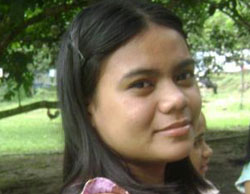 I was born an inquisitive individual. It’s very usual and natural for me to be very curious about a lot of things, even senseless ones. Since the time I learned the art of talking and inquiry, I usually would ask my family a lot of questions. I would even dare to ask neighbors and people I’d meet. I would ask about the world - its physical characteristics, wonders and so on. I would ask about people and events. I would ask why there’s a moon at night and a sun in daytime. As time passed by, my curiosity about many things was answered by books, media and experiences. Almost all was perfectly answered except the questions ‘Why God doesn’t reveal to us His magnificent plans for us?’ and ‘Why does God allow us to fail and make mistakes?’
I was born an inquisitive individual. It’s very usual and natural for me to be very curious about a lot of things, even senseless ones. Since the time I learned the art of talking and inquiry, I usually would ask my family a lot of questions. I would even dare to ask neighbors and people I’d meet. I would ask about the world - its physical characteristics, wonders and so on. I would ask about people and events. I would ask why there’s a moon at night and a sun in daytime. As time passed by, my curiosity about many things was answered by books, media and experiences. Almost all was perfectly answered except the questions ‘Why God doesn’t reveal to us His magnificent plans for us?’ and ‘Why does God allow us to fail and make mistakes?’
It was the fine sunny day of 11 June this year that I finally got the answers to those two questions that had kept on bugging my brain and senses. At that time, I was attending the freshmen orientation of my school as a marshal/facilitator. My questions were answered indirectly by a remark made by St John Baptist de La Salle during his last days on earth. In his remark, St LaSalle said that he would never have gotten involved with the Brothers of Christian Schools if God had allowed him the luxury of looking into his future. Many of us, if given the chance to foresee the things that will happen in the future would most likely choose a life far from the likes of that of St LaSalle. Isn’t that so? Why would we bother to take those long, hard and rough roads of life? Why should we endure a life of trials and dilemmas, feel the pain of difficult situations and face challenges and the consequences of wrong actions and failures?
But God, being omniscient, conceals from us the ability to see the future so that we can find courage, love, faith, temperance, trust and fortitude instead of discouragement and hopelessness. He conceals the future from us so that we can learn that failures and shortcomings are realities of life and that we can not only outrun but learn from them. Moreover, I believe that indeed God conceals the future from us so that we may find happiness and contentment in all our endeavors even though the road ahead of us is long, rough and bumpy and in the end we can see that amidst all the hazards and difficulties along the way, there is a greatness and satisfaction that awaits us.
Strange and mysterious as it seems, God seems to give us the gift of the absence of foresight. We may not see the wisdom of God’s decision as of this moment but I strongly believe that in the end we will be thankful for it. As we continue to face every trial, challenge, failure, shortcoming, difficulty as well as victory, success and positive outcome of our life, we should always remember that even though we are not be able to see the future, predict outcomes and determine which is which, what is important is that we take the challenge and continue to trust God. Remember, the journey becomes meaningful if we embrace the process.
You may contact Shiela at smgt08@yahoo.com
Peace By Peace

Isaiah 32:17, RSV
A violent person always stands to lose, even though he may win the first battle, for he ends up isolated and hedged around by his lack of understanding.
Furrow, No 867, by St Josemaría Escrivá(1902-1975)
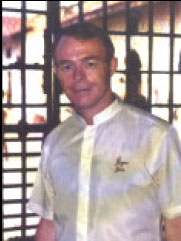
Nonviolence is not an end in itself; it is a means. The end purpose is life with justice, the beginnings, the ‘already but not yet’ of the Kingdom of God. It is precisely this lack of justice that lays the basis for violence. If we want to remove violence we must first remove injustice.
Island of Tears, Island of Hope, Chapter 6, by Fr Niall O’Brien
Eco-Ideas for Urban Planners
Cities and heavily populated areas are now a major ecological threat to the region where the cities are located as well as to the whole planet. It has become essential that city planners must seriously undertake action plans to curb the ecological damage of urban growth. Commercial and residential planning for example must take into consideration steps to reduce the use of cars by planning business locations within walking distances of residential areas.
Here are some ideas as presented by Peter Berg:
- Cities should implement full-scale recycling programs and promote the use of recycled materials.
- Buildings should be made to use renewable energy.
- Single-passenger automobile use should be heavily discouraged through increased tolls; gasoline taxes should be imposed to pay for more public transit; downtown streets should be closed to private automobiles.
- Planning decisions should be framed around residents' interest in preserving neighborhood livability.
- Public information programs should teach natural features, native plants and animals in the city to all school grade levels.
Peace Ideas, Issue No. 20
"...When we learn how to say goodbye we truly learn how to say to ourselves and others: 'Go, God be with you. I entrust you to God. The God of strength, courage, comfort, hope, love, is with you. The God who promises to wipe away all tears will hold you close and will fill your emptiness. Let go and be free to move on.' "
Praying Our Goodbyes by Sr Joyce Rupp OSM
The Teardrop
The story is told that one day the angels from heaven swooped down to earth in search of the best gift for the Father in heaven. One by one they came back and presented to God the best gifts they found. The Father was pleased, but His joy was so apparent and complete when a little angel came up to Him. Opened his hands and showed the Father a teardrop from a person he saw praying and crying in a dark chapel, burdened by so much trials yet still hopeful, still strong, still holding on.
According to the story, the Father stood up, embraced the little angel with the words ‘You have brought me the best gift of all. Those people who have problems and failures but still go on, are very close to my heart!’
from Just a Moment by Fr Jerry M. Orbos SVD
St John Mary Vianney taught his parishioners primarily by the witness of his life. It was from his example that they learned to pray, halting frequently before the tabernacle for a visit to Jesus in the Blessed Sacrament. ‘One need not say much to pray well’ – the Curé explained to them – ‘We know that Jesus is there in the tabernacle: let us open our hearts to him, let us rejoice in his sacred presence. That is the best prayer’.
Pope Benedict XVI, Letter Proclaiming a Year for Priests, 16 June 2009
Pulong ng Editor
RYD in Kabankalan
 By Glezyl Benbi Montecillo
By Glezyl Benbi Montecillo
The author is in Fourth Year high school at Kabankalan Catholic College (KCC) where this year’s Regional Youth Day (RYD) took place.
Regional Youth Day is one of the traditions of the Catholic Church in which the youth are given a chance to be together and be united as  one. It reflects World Youth Day which was established by Pope John Paul in Rome in 1986. After the previous RYD in Romblon in 2007, it was decided that the next RYD would be held in Kabankalan.
one. It reflects World Youth Day which was established by Pope John Paul in Rome in 1986. After the previous RYD in Romblon in 2007, it was decided that the next RYD would be held in Kabankalan.
The theme for this year’s RYD, held from 21 to 24 April, was ‘Through the power of the Holy Spirit who lives in us, keep the good things that have been entrusted to you.’
21 April, first day – ‘Welcoming the flame of the Holy Spirit’
At 8am: the arrival and the registration of the delegates from the different vicariates of the Diocese of Kabankalan. At around 1:30pm: the arrival of delegates from the different dioceses and archdioceses of the Western Visayas. The delegates from the Diocese of Kabankalan did the welcoming. After lunch the delegates were assigned to their respective foster parishes and foster families.
The RYD was participated in by 860 delegates:
127 From the Archdiocese of Jaro, 16 from the Archdiocese of Capiz, 17 from the Diocese of Romblon, 49 from the Diocese of Kalibo, 37 from Diocese of Antique, 71 from the Diocese of San Carlos, 46 from the Diocese of Bacolod and 219 from the Diocese of Kabankalan.
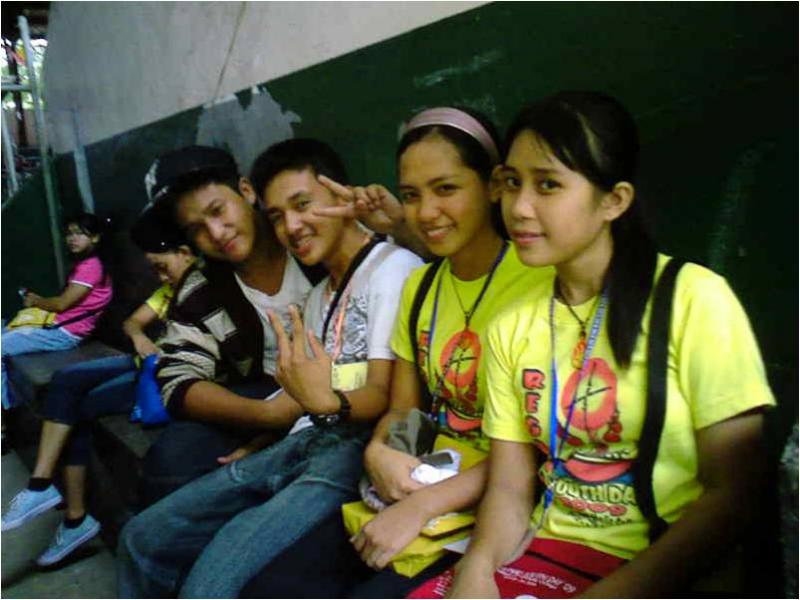
That night the program began with Holy Mass, celebrated by Bishop Patrick A. Buzon SDB of Kabankalan together with the other priests from the different dioceses and archdioceses. After Mass we were able to roam around and make friends.
Governor Isidro P. Zayco of Negros Occidental and Mayor Elpidio Zayco of Kabankalan City gave their messages of welcome to the delegates.
22 April, second day- ‘The flame of the Holy Spirit in us’
We grouped ourselves and had some talks about the theme and we were given some questions to answer and share in our group. In the afternoon we had different, simultaneous workshops that focused on developing our skills and talents. These were followed by Holy Mass celebrated by Bishop Jose Corazon T. Tala-oc of Romblon and the other priests. At night we had a Taizé prayer service with the theme, ‘Praying with the Flame’.
23 April, third day – ‘Burning with the flame of the Holy Spirit’
We had a talk about the elections in 2010 with National PPCRV (Parish Pastoral Council for Responsible Voting) Chairperson Henrietta de Villa as our guest speaker. She emphasized ‘CHAMP’ (Clean Honest Accurate Meaningful and Peaceful elections) and its purpose, ‘For a change’ and that ‘election’ is not for a term of money but an act of choosing. Pelagio Apostol, Deputy Ombudsman for the Visayas, gave a talk on graft and corruption.
In the afternoon, we had our sharing and gave reactions to the talks. Holy Mass then followed, celebrated by Bishop Gerardo A. Alminaza, auxiliary of Jaro. Later we had our fellowship night and we did enjoy ourselves because that was the last night of RYD 2009.
24 April, the last day – ‘Bringing home the flame of the Holy Spirit’
There was a parade from KCC to St Francis Xavier Cathedral followed by Mass celebrated by Bishop Precioso D. Cantillas SDB of Maasin, with Bishop Jose F. Advincula Jr of San Carlos and Bishop Patrick A. Buzon SDB. During the Mass we had the turnover of the banner to the Diocese of Kalibo, Aklan, the next venue of RYD in 2011.
You may email Glezyl at bhabiegul@yahoo.com
Stephen Cardinal Kim Sou-Hwan RIP
By Fr Donal O’Keeffe
The author is a Columban from Ireland and has served as superior of the Columbans in Korea. ‘Sou-Hwan’ used by the author here and ‘Suwhan’ used by Father O’Rourke in his poem are anglicized variations of the Korean personal name of the late cardinal.
On Monday 16 February at 6.12pm Cardinal Kim died in St Mary’s Hospital, Seoul. Within an hour the crowds were gathering at the Cathedral to  receive the body which arrived at 9.30pm. Beginning that night and during the following three days over 400,000 people filed past the coffin to pay their respects. It was an unprecedented display of affection and respect for the man they called the ‘kun orun’(literally the ‘great elder’). People of all religious persuasions, young and old alike, came to see him for the last time. The cathedral was full and the church yard was overflowing for the funeral on the Friday the 21st which was broadcast live on all the networks.
receive the body which arrived at 9.30pm. Beginning that night and during the following three days over 400,000 people filed past the coffin to pay their respects. It was an unprecedented display of affection and respect for the man they called the ‘kun orun’(literally the ‘great elder’). People of all religious persuasions, young and old alike, came to see him for the last time. The cathedral was full and the church yard was overflowing for the funeral on the Friday the 21st which was broadcast live on all the networks.
Kim Sou-Hwan (Stephen) was born in May 1922 in Taegu in the province of Kyongsangdo to a fervent Catholic family. His grandfather Kim Bo-hyun (John) was arrested and martyred in Seoul in 1868 during the last persecution of Christians in Korea. His grandmother was also to be executed with him but was released because she was pregnant. The child born was Kim Young-sok (Joseph) who was to become the father of Kim Sou-hwan. Following his elder brother the future cardinal entered the minor seminary in 1933, the year the Columbans came to Korea. He was ordained in 1951 and in 1966 was appointed bishop of Masan - a small rural diocese. He was the youngest bishop in the country when appointed Archbishop of Seoul in April 1967 and was made a cardinal the following year by Pope Paul VI. In his own words the appointment was as ‘a bolt of lightning from a clear sky’ – totally unexpected. In his homily at the Mass of installation he set out his vision of a church for the people, especially the marginalized. Faithful to his word he began to speak out on issues of Justice. His Christmas Mass of 1971 was abruptly cut off the air when he criticized the government.
 But he would not be silenced. During the following decades Cardinal Kim became the conscience of the nation and Myongdong Cathedral became synonymous with the struggle for freedom. But it was his actions which spoke louder than his words. In 1986 when Seoul city evicted people to make room for a new development in preparation for the 1988 Olympics the cardinal invited the families to live in the cathedral grounds. He set up two huge tents and there, in the heart of the business and tourist centre of Seoul, those families lived with meals being cooked in the church yard and children playing around the entrance to the cathedral. This continued for months until a settlement was negotiated.
But he would not be silenced. During the following decades Cardinal Kim became the conscience of the nation and Myongdong Cathedral became synonymous with the struggle for freedom. But it was his actions which spoke louder than his words. In 1986 when Seoul city evicted people to make room for a new development in preparation for the 1988 Olympics the cardinal invited the families to live in the cathedral grounds. He set up two huge tents and there, in the heart of the business and tourist centre of Seoul, those families lived with meals being cooked in the church yard and children playing around the entrance to the cathedral. This continued for months until a settlement was negotiated.
In June 1987 students took refuge in the grounds after a rally for democracy and the police threatened to come in and arrest them. But the cardinal told the government: ‘If you come in you will first have to trample over me, then the priests, then the sisters and only then will you take the students’. Cardinal Kim was truly the voice of the people.
He was also a great friend of the Columbans. He was a young student in the minor seminary in Taegu when the Columbans first came to Korea in 1933 and stayed there for six months. I recall him sharing with us that he remembered ‘the foreign priests playing football in their cassocks’. In his book he mentions the inspiration of the Shilimdong ‘house of love’ where Columbans had moved in to work with the poor in a new way. He was always thankful to the Columbans for building so many parish communities in Seoul in the 1970s and 1980s when people were pouring in from the countryside.
The impact of Cardinal Kim was not confined to Korea. He was an influential church figure in Asia and one of the driving forces behind the establishment of the Federation of Asian Bishops Conferences (FABC). Cardinal Kim was one of four Asian cardinals who traveled to Rome to meet with Pope Paul VI to discuss the initiative. The result was formal recognition in 1972 despite misgivings by the Curia who were nervous of regional bishops’ organizations because of their experience with CELAM (the Latin American Bishops’ Conference).
In the days following his death, like people all over the country, we were sharing our memories, our stories of the man. Everyone seemed to have their favorite story. My own goes back to 1977 when I was a student at language school. That year the Brothers of Charity came to Korea at the invitation of the cardinal. So when trying to decide where they would establish their house they sought the advice of the cardinal. He suggested that they visit different parishes and inquire if they were any destitute persons living in the area. However, everywhere they went the reply was similar – ‘There are poor people but no one destitute or living rough - there might be people like that in India or the Philippines but not here’.
More than a little downhearted, they returned to Myongdong and told their story to the cardinal. He just asked them to meet him the following morning at dawn in front of the cathedral. When they arrived he was waiting for them dressed in civilian clothes and wearing a baseball cap. They set off together on a city bus until they came to a dried-out riverbed. Following the cardinal they got off and went down and, under a bridge, they came across a group of men sleeping rough. After a simple greeting they went back up on the road and continued on their journey. That morning the cardinal brought them to some other similar places and on the way back to the cathedral he told them, ‘Do not believe those who tell you that we don’t have destitute people in Korea. They just do not know’. That happened 32 years ago but for me it sums up the man – he was always in contact with the marginalized and reaching out to them.
After retirement in 1998 he set up his own home page and responded personally to all who wrote to him. Children knew him as ‘Grandfather’ – he always answered their mail. His last act was to donate his eyes. That gesture really touched many people. In fact in the aftermath of his death organ donation rates have soared thirty-fold in Korea. Then his funeral was so simple – his request that there would be nothing ostentatious was respected – to the degree that even the wreath sent by the president was returned with thanks.
Korea is now mourning the death of a great citizen and the Church mourns the passing of a pastor and a prophet. And yet as I witnessed the genuine grief, the mourning and the funeral, I had an uneasy feeling that the process of domesticating the memory of the Cardinal was already beginning. In the funeral homily the focus was on the love practiced by him, how thankful he was to everyone, in particular the people who were around them in his last days. All churches in Seoul archdiocese now have banners over the entrances containing a photograph of the cardinal and the words ‘Thank you, let us love each other’. But the cardinal always spelt out the concrete meaning of love. He named the issue of the day, be it the rights of workers, or the rights of people to housing. He never flinched from mentioning the word ‘justice’ or identifying who was marginalized and spelling out the root causes of marginalization. But such prophetic proclamation is noticeably absent today. The old axiom comes to mind: ‘The one who controls the present controls the past, and the one who controls the past controls the future’. As always, the challenge to each of us is that we strive to be genuinely faithful to ‘the dangerous memory’.
You may write the author at: St Columban’s. CPO Box 1167, SEOUL 100-611, KOREA or email him atokeeffe.donal@gmail.com
Teachers' Guide
Dear Teachers,
Some Sunday Masses in July and August include readings from the book of Exodus where Moses led his people to Canaan, a remarkable period of struggle, dryness and perseverance leading to the Promised Land; ‘the liberation of slaves and it is the choosing by God of the Israelites, a genuine liberation which concerns the whole human reality, individual and social.’
This account does not end only in the Bible. Many could liken their individual and social struggles to that Exodus. The human reality at some point reflects such. But who remains God’s chosen leader? You? Will you take this responsibility?
‘The call to become a Church of the Poor is a universal call, a universal concept. Where there are victims, the afflicted, the little ones, with them the Church is called to Be. To be a Church of the Poor is not just a preferential option, but a demand of our being the People of God.’ (Second Diocesan Synod -Bacolod) God has called each of us to partake in His mission. We can fulfill that mission in our own way, in our own backyard. You are given the opportunity to be one of those who can bring about change and produce the fruits of your noble profession.
God grant each of you the grace of fortitude and perseverance as you work in His vineyard.
OUR COVER

Our cover shows the Negros Nine Logo bearing the map of Negros with the initials ‘KK’ which stand for Kristianong Katilingban, the cross signifying Catholicism. Behind is the photo of the Negros Nine members taken sometime in 1983 when they were in prison during Martial Law.
‘The story of the Negros Nine symbolizes the struggle of the poor for a better life in a safe and sustainable environment, ie, “total and integral human development.”’ The 25th anniversary of the release of the Negros Nine on 3 July 1984 will be celebrated with a Mass and program in Kabankalan City on 2 July.
Ask your students, ‘What is being evoked in the picture? What stories are you reminded of when we speak of Martial Law?’
STUDENTS’ WORKSHOP
International Meeting on WYD is an update on the impact before, during and after the most recent World Youth Day held in Sydney, Australia, and the planning for the next WYD in Madrid, Spain. Regional Youth Day is our local version of the World Youth Day. A high school student tells us what happened in the RYD in Kabankalan.
Have them read the articles. Ask representatives to report the important events to the class through ‘news-casting’. Facilitate a question-and-answer activity on the details of the articles.
FAITH SHARING
Each has his own way of expressing his faith, much more with different cultures. Our missionaries in the stories had their own encounters with people so different from themselves yet found something common in their belief in God. Doing the work of God might be difficult but surely He grants consolation.
Have your students read the articles and ask the following questions:
a. Have you encountered persons of different beliefs from yourself?
b. How did you behave/react?
c. Given the stories as examples, what are you invited to do?
Emphasize respect for individual belief, religion and culture. This will also make good material for inter-religious faith-sharing.
YOUTH CORNER
Absence of Foresight: a Gift from God tells of how a young mind pondered on the giftedness of having no foresight without disregarding those who claim to have one. It’s an affirmation in the absence of such. Our letter sender in Your Turn shares with us her own story as she reflects on one of the previous articles, highlighting ‘in every darkness, there is light.’
With the inspiration of the above articles,
a. What struck you most?
b. Tell a story of your own misfortune or a loss that turned into a blessing.
c. Have you recognized God’s loving hand in that incident of your life?
The class can sing ‘I See You, Lord’ or ‘Something More’ inviting them to internalize the lyrics as well.
PRACTICAL FAITH
Dialogue of His Holiness Benedict XVI with the Children of the Pontifical Society of the Holy Childhood
Father Joeker can be used as an icebreaker and the Peace by Peace as something to ponder on. It’s good to be reminded sometimes of some quotes that can help us in our reflection. To Search is to Find discusses the issue on Church’s stand on clergymen running for political office, just in time for our upcoming 2010 national election. Dialogue of His Holiness Benedict XVI with the Children of the Pontifical Society of the Holy Childhood shares with us three brilliant questions addressed directly to our pope.
If children of a very young age care enough to ask the Pope about matters concerning faith, you too can formulate questions which you deem necessary. You can write them and email them toeditor@misyononline.com and we shall answer them as soon as we can. We will also use some of them, anonymously, in To Search is to Find.
OASIS POINT
Cardinal Kim finally rests in God’s dwelling place yet lives in the hearts of those people whose lives he touched. God has commissioned each of us ‘to build a world in accord with the Gospel’ and Cardinal Kim responded to it accordingly. His is a life of testimony of building a nation and fulfilling his vision of a ‘Church for the people, especially the marginalized.’
a. What is the quality of this man that makes him so loved by the people?
b. What lesson/s have you learned?
We are remembered by how we live our lives and by how much impact we have on the world.
c. How do you want to be remembered by others?
Introduce to the class the activity ‘Remember me this way’ in which each has to share a line of thought or a simple gesture that tells of how s/he wants to be remembered.
MISSION-BUILDING
The many pressing issues of the country today seem to confront us with the question of how much have we contributed to our nation and how are we responding to God’s call for us ‘to go and bear fruit - fruit that will last.’
Awakened in the world of injustice and being victims of it, the Negros Nine have truly shown us how to ‘live the Gospel in a revolutionary situation.’ Theirs is a story of hope, justice, courage, transformation, freedom and liberation.
We have here an article from a surviving Negros Nine member, the widow of another and of her daughter, a Negros Nine baby. Given the articles coming from different experiences of one significant event,
Divide your class into three groups.
a. Let them re-live the situation described in their assigned article through a creative presentation.
b. Let each group highlight the lesson they have learned. How can they relate it to the present situation of our country?
c. Name some issues that are similar in struggles to that of the Negros Nine.
You can also invite them to visit the website www.negrosnine.com
The Negros Nine Live On
By Father Brian Gore
Columban Fathers Brian Gore, and Niall O’Brien, along with six lay church-workers were released from jail on 3 July 1984. Fr Vicente Dangan, a priest of the Diocese of Bacolod, had been released some time before that. These men had become known as ‘The Negros Nine’.
 In 1983 three priests and six lay workers in Kabankalan, Negros Occidental, were charged with multiple murder. Over the next 14 months of trial and imprisonment they become known worldwide as ‘The Negros Nine’.
In 1983 three priests and six lay workers in Kabankalan, Negros Occidental, were charged with multiple murder. Over the next 14 months of trial and imprisonment they become known worldwide as ‘The Negros Nine’.
These trumped-up charges were meant to stop the work of the Basic Christian Communities (BCC) in which the Nine had been among the forerunners in Negros. The goal of the BCCs or the Kristiyanong Katilingban (KK) was the non-violent transformation of Negros society through total human development.
The Negros Nine had also became a voice for the poor, as encouraged a few years earlier by Pope John Paul II in Bacolod City in 1981 when he said ‘the church should not hesitate to be the voice of those who have no voice’.
The Negros Nine Human Development Foundation, Inc was set up in the year of the Great Jubilee (2000) and bought twelve hectares of titled land in the mountains of Kabankalan at a place called Bantolinao to help the surrounding subsistence farmers, many whom were members of the ‘KKs’ started in the 70s.
Demo Farm
The situation of the farmers continues to deteriorate as their land becomes more and more eroded and unproductive. The poor cannot afford to experiment or take risks in their farming methods as it could mean certain hunger if they failed. The demo farm was set up to show that changes need to be made and that new and better ways are possible. The farmers are being introduced to sustainable methods of agriculture. Not only are these cheaper but because they are organic they are healthier for them and the environment. Sustainable agriculture uses local resources without endangering the needs of future generations.
Even if farmers are able to improve their production they can be at the mercy of the middleman in the selling of their products. The only chance to get a better price is through a cooperative effort. This is especially so if you are in a remote area.
Reforestation
The farm has a good water supply from a natural spring in a small area of forest on the property. In order to protect this valuable resource, forest land surrounding the farm has been acquired by buying the rights of the ‘owners’. This land has been mostly cleared and is not suitable for cultivating. Hardwood indigenous varieties, local to the area, are being planted to build the area into a mini forest of around 20 hectares. This will help prevent erosion, protect the water sources and bring back the native species of plants, birds and animals that have all but disappeared. The members of the co-op are undergoing seminars on agro-forestry and bio-diversity. They are also being encouraged to plant trees in their own farm lots, both for their personal use and for the environment.
The target for this year is to plant 3 to 4 hectares. This will be done by the members of the co-op who have undergone training for this purpose. They will also be able to earn some money during the lean months and so help feed their families.
Money for the first part of this project has been given by the Irish Government as they move to meet the Millennium Development Goals set by the United Nations.
Fr Brian Gore is now in charge of San Columbano Mission House in the Diocese of Kabankalan, Negros Occidental. You may email him at fatherbriangore@hotmail.com.
Background on The Negros Nine
You can read more about The Negros Nine on the website of the Negros Nine Development Foundation, Inc if you click on ‘Background’.
There are short extracts from the Australian TV documentary on Father Gore, White Monkey, here.
To Search Is To Find

While riding in a public vehicle, I overheard a conversation between two passengers and the driver. They were discussing both national and local issues like the oil deregulation law and the implementation of the ‘No Segregation, No Collection’ policy in regard to garbage collection in Bacolod City. I enjoyed listening to the three and was amazed at the free and healthy flow of ideas and I realized that on issues like these the media should also consider the points of view of ordinary people and not just those in authority.
As I got off the vehicle, the three were discussing the Church and State relationship and clergymen running for political office. My subsequent research on this led me to ask this question: Is it all right for clergymen and women to run for political office? What is the stand of the Church on this?
I’m not sure whether you were on a bus or a jeepney but traveling on public transport of any kind can be most interesting: ‘All human life is there’. (My research shows that that quotation is part of a longer one by Henry James (1843-1916), ‘Cats and monkeys - monkeys and cats - all human life is there’. I don’t think I’ve ever seen either cats or monkeys on a jeepney or bus!
But when I’m at home in Ireland I travel by bus frequently and notice many things, especially the kindness of people. One of Ireland’s best-known novelists, Maeve Binchy, got much of her material from events and overheard conversations while traveling by bus.
One slight correction. In the Catholic Church there are ‘clergymen’ but no ‘clergywomen’. A clergyman basically is someone in Holy Orders, a bishop, a priest or a deacon. Religious Brothers and Sisters aren’t members of the clergy. The Church ordains only men, teaching that this is God’s will.
However, generally speaking clergy and religious are not allowed by the Church to run for public office. In Mexico they’re not allowed by state law to do so, but that’s a different issue. On rare occasions the Church will allow a priest or religious to run for office, but this may mean that they have to take a temporary leave from exercising their priesthood, for example, as is the situation with Governor Ed Panlilio of Pampanga. Back in the 1970s there were two religious priests elected to the US House of Representatives, Fr Robert Drinan SJ and Fr Robert Cornell, a Norbertine. However, at the request of the Vatican they didn’t run again in 1980. Both, as far as I know, continued their priestly ministry while in Congress.
The current president of Paraguay, Fernando Lugo, was a bishop when he announced his desire to run for office. However, the Vatican eventually laicized him, something very rarely done with a bishop, and he ran, and was elected, as a layman. Some scandals about his personal life while still a bishop came to light earlier this year.
So the Church basically doesn’t allow bishops, priests, deacons or religious to run for office. Here in the Philippines they all have the right to do so as citizens. But I remember Cardinal Vidal of Cebu telling a group of priests and religious at a fiesta lunch, ‘If you want to run for office, please come and let me know – and I will suspend you!’ He said it with a smile and we all laughed – but we got his message.
I think that the Church’s stand is wise. The Church, through its bishops and priests in particular, should be reminding the laity that it is their responsibility to engage in honest politics and to work for a just society in accordance with the Gospel. Vatican II’s The Church in the Modern World (Gaudium et Spes) addresses this whole area in numbers 74 to 76
Vocation Page -- July-August 2009
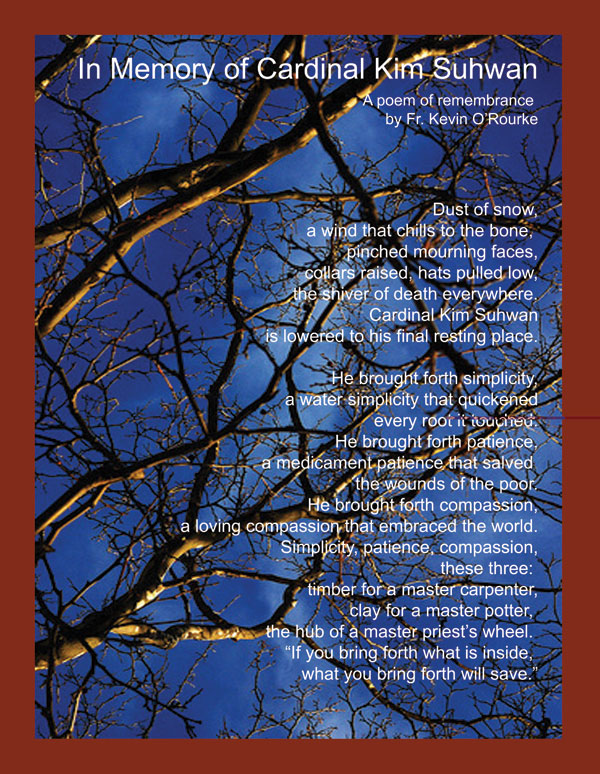
For more information contact:
Father Jude Genovia, St Columban's Mission
PO Box 4454, 1099 Manila
Tel: 02-400-4765 / 02-523-7332
Email: columbanfathers@yahoo.com
Website: www.columban.ph
In Memory of Cardinal Kim Suhwan
A poem of remembrance by Fr Kevin O'Rourke
What Makes Her Life Worthwhile
By Joy Rile
The author is editorial assistant of Misyon and interviewed Serafina when she visited us in Bacolod recently.
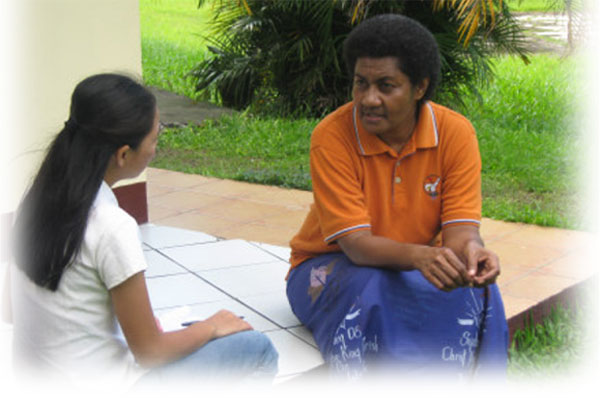 Serafina Vuda is a 46-year-old Columban Lay Missionary from Fiji. She was on mission in Chile from 1997 to 2000 and in Peru from 2001 to 2007. She came to the Philippines last May to take a course in Family Ministry at Ateneo de Manila University but had to stop after one semester due to her being elected Coordinator of the Lay Missionary Central Leadership Team (LMCLT), taking office on January, 2009.
Serafina Vuda is a 46-year-old Columban Lay Missionary from Fiji. She was on mission in Chile from 1997 to 2000 and in Peru from 2001 to 2007. She came to the Philippines last May to take a course in Family Ministry at Ateneo de Manila University but had to stop after one semester due to her being elected Coordinator of the Lay Missionary Central Leadership Team (LMCLT), taking office on January, 2009.
Way back then, brought up in a traditional Catholic family , she became a teacher in a two Columban parochial primary schools for seven years, and taught at a school run by Missionary Sisters of the Society of Mary(SMSM) for four years. She was a sportswoman and once represented her country in an international netball competition. Her life then was divided between sports and teaching.
for seven years, and taught at a school run by Missionary Sisters of the Society of Mary(SMSM) for four years. She was a sportswoman and once represented her country in an international netball competition. Her life then was divided between sports and teaching.
Serafina liked sports, going out with friends, had a boyfriend, but found something more meaningful in lay mission.
She describes the Church in Fiji as ‘conservative, solemn, orderly, well respected and more religious orientated’. Since the arrival of the first Marist Missionaries from France in 1884, all activities were under the care of the religious. Although there are active parishioners, the laity still rely very much on the priests and religious as resource people to help them in their faith life. ‘Serafina is grateful to the Columban Fathers for promoting the missionary dimension of the Fijian Church by sending lay people to cross boundaries of cultures, countries, language and religion in order to bring the Good News to others.’
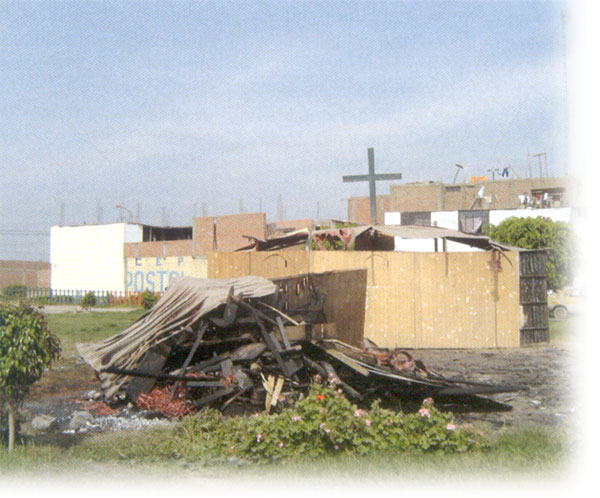 Serafina was really attracted to the life and work by the Columban Fathers in Fiji: their simplicity and their closeness to people, as they always had time to talk to them. They were human and liberal. The needs of the people were very important to them. Their commitment, love and dedication to mission really drew her to missionary life. “The Columban charism is indeed contagious.” Working closely with the Columban missionaries deepened my self-awareness, faith, and sense of commitment to mission. Those Columban missionaries all shared in the people’s lives, joys and sorrows.’
Serafina was really attracted to the life and work by the Columban Fathers in Fiji: their simplicity and their closeness to people, as they always had time to talk to them. They were human and liberal. The needs of the people were very important to them. Their commitment, love and dedication to mission really drew her to missionary life. “The Columban charism is indeed contagious.” Working closely with the Columban missionaries deepened my self-awareness, faith, and sense of commitment to mission. Those Columban missionaries all shared in the people’s lives, joys and sorrows.’
One day while Serafina was still teaching in Stella Maris School, she met Sister Stella SMSM, then suffering from leukemia, who was out strolling with her dog. Sister asked her, ‘What do you plan to do with your life?’ Serafina answered, “I think the children in the mountain village schools need me more that these city kids as these are more advanced. But the next question really struck her, ‘Even those children in the mountains in Fiji have heard about Jesus Christ,Have you ever thought about children in other parts of the world who may not know Jesus yet?’ Serafina has no response to this question.After two weeks, just before Sister Stella died, Serafina told her, ‘Thank you and pray for us when you are with Jesus.” Sister uttered ‘I will.’ As she jokingly says, Sister Stella is to be ‘blamed’ for her becoming a lay missionary.
Basically, she realized that we don’t have to be a religious to commit our lives in the service of the Church. As lay persons, we can also serve the church actively. “I simply would want to be identified with the people, to be one of them while at the same time commit my life to being a missionary.”
There are three things that summarize her way of serving as a lay missionary:
- active presence by listening and responding to the needs of the people;
- witnessing to the Gospel by taking on Jesus’ attitudes of love, compassion and forgiveness;
- service to the local church by promoting the participation of lay people there and also overseas as Columban lay missionaries.
Of all her missionary experiences, the one that truly marked her heart was when she was still starting her mission in Peru.In the parish she was assigned to she was to choose one among the twelve chapels to work in.She finally chose the one made of thatched bamboo.It was seated on bare dry ground with no trace of green.It seemed to be falling apart but peeping through the cracked door,the picture of the Sacred Heart of Jesus caught her attention.This captured her heart. She started visiting the people there and accompanied that Christian community for the six years she was in Peru.
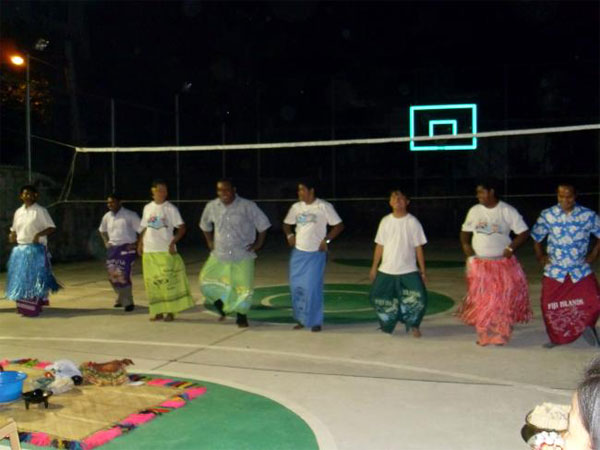 She learned of a family of six whose single mom left to look for work then came home drunk and beat the children. One daughter ran away from home. Christian, an 11-year-old son, living in the same congested and unhygienic shelter, studied in the afternoons but after some time gave it up since he had to take care of his three younger siblings while his mother was away. Serafina asked him one day what he would like to be. Christian answered that he wanted to be a lawyer because he wanted to fight for people’s rights, persons like his mother. Serafina often saw him washing, cooking and caring for his siblings until late at night.
She learned of a family of six whose single mom left to look for work then came home drunk and beat the children. One daughter ran away from home. Christian, an 11-year-old son, living in the same congested and unhygienic shelter, studied in the afternoons but after some time gave it up since he had to take care of his three younger siblings while his mother was away. Serafina asked him one day what he would like to be. Christian answered that he wanted to be a lawyer because he wanted to fight for people’s rights, persons like his mother. Serafina often saw him washing, cooking and caring for his siblings until late at night.
Days after his First Holy Communion, he disappeared from home. He was found by the police wandering. When asked about his background, he simply answered that he knew nothing. So he was brought to an orphanage. When Serafina visited him one day, he told her that nobody knew what he had been going through while left to take care of his siblings and being beaten up by his mom when she arrived.
This was one of the stories that really pierced her heart. Back in Fiji, she thought, an 11-year-old is still very much dependent on his parents for food, shelter and education, but here was a boy playing the role of a father at that young age. As she reflected, Christian was just one of many kids who are victims of poverty and of broken homes. If we live to enjoy life, they live just to survive.
Such experiences brought her to appreciate and value life more profoundly. She became more conscious that there are people living in abundance, while many more are living in nothingness; that we are lucky for we have many things, if not everything.
In accompanying her Christian community in Peru, she underwent many struggles. Just when she formed a youth group as a response to the need for youth formation, gangsters from other barrios searched for their victims in the chapel where they gathered weekly. The inhabitants of the ‘barrio’ blamed the presence of the chapel for causing chaos and danger in their place. A conflict arose between pastoral agents and the neighbors.
In her third year there, Serafina woke up one day to see only the remnants of the chapel. What was left standing was just the huge statue of the Sacred Heart of Jesus. She shed tears with the people in what she termed ‘this most inhuman and shocking incident’. But the young Peruvian priest decided to continue with the Mass in front one of the homes, that evening despite what had happened. It was such a solemn and silent night. Everybody was so emotional; tears flowed during the readings and hymns. But what really touched her was when the man beside her said, pointing upwards, “Although we don’t have a roof, we still have Him.”An article written by Serafina with this title in the `Far East`magazine (Australia/New Zealnd) touched the generous hearts of readers and their donations enabled the community to buy a piece of land for the future chapel two years later.
In the meantime they moved to another corner of the ‘barrio’, bought and put up a prefabricated chapel. After two years it was burnt down. That place witnessed many tears shed in frustration, pain and anger. But Peruvians don’t give up that easily.
 Great as this was, it didn’t end their struggles. But they kept going and now have a sturdier, cemented church on the newly bought land.This is the present location of the ´pilgrim church`of `Sagrado Corazon’ (Sacred Heart) in the midst of the neighbours that had initially rejected and removed it.
Great as this was, it didn’t end their struggles. But they kept going and now have a sturdier, cemented church on the newly bought land.This is the present location of the ´pilgrim church`of `Sagrado Corazon’ (Sacred Heart) in the midst of the neighbours that had initially rejected and removed it.
Being a missionary, Serafina recalled, has been life transforming for her, where she sees God moving in all of her experiences. There was a season of pain that led to the season of gain; moments of death but most of all moments of Resurrection.This continue to be part of the life of any Christian.
The big change that has happened to her as a Columban lay missionary is personal growth. She has developed a deeper self-awareness, an appreciation of people from other cultures, and a deeper relationship with the Mysterious God.
Her faith continues to grow. But the faith she describes is never full and never complete. There will always be room for growth, the more she thirsts and hungers for the sacred presence.
Committing herself as a Columban missionary gives Serafina a meaningful and fulfilling life; her service is to be life-giving to others, and this makes her life joyful in spite of the many challenges. It is the joy of sharing life and bringing God’s love to other people that makes the missionary experience worthwhile and fulfilling.
Living on mission in a country with people of different cultures is very challenging. ‘The most powerful way of attracting people to the missionary life is to live by example, to be coherent in what I say and what I do. One cannot give what one doesn’t have. It’s in your own person; it’s the image that you portray. It’s how you are as a person and how you relate to others that touches and changes people’s lives.’
You may email Serafina at fina@columbanosperu.org and Joy ateditorialassistant@misyononline.com
Your Turn

This letter is from our files. The author was a second-year high school student at the time when Misyon was still a printed magazine. Her name and address are with the editor.
Dear Father Seán Coyle,
Greetings in the name of Jesus, Mary and Joseph!
I’m a second-year student in a Catholic high school in the Visayas. I love reading Misyon. I love the stories in it and I learned a lot from it. Among the stories or articles, my favorite is In Him Alone by Noe Hijara Pedrajas (July-August 2004 issue). [Editor’s note: The author of that article is now a priest in the Diocese of Marbel.] It really touched my heart. I learned many things from this article. I learned that we should never lose our faith in God no matter what happens in our lives. I learned that we should never blame God for the death or loss of a loved one. I believe that ‘In every darkness there is Light’.
Father, I want to tell you my own story, related to the article In Him Alone. I’m an illegitimate child. I bear my mother’s maiden name. My father left me when I was still in the womb of my mother. Until now I haven’t seen him. When I was six months old, my mother married an American. For me, the American is my real father. My mother migrated to the States with my Daddy (the American). I grew up with my grandparents but my mother always visits me here in the Philippines and my Daddy visited me during Christmas 2003. He filled the emptiness inside me. My mother is always there for me even if we’re miles apart. My grandparents guide me. I’m very contented with my life now with the people who are loving me so much. I’m very happy even if I haven’t seen my real father. We should always believe that ‘In every darkness there is Light’.
Father Seán, thank you for listening. Thank you to Misyon.
Father Seán, thank you for visiting our school.
Truly yours,
‘Expectant Faith’ And Sincere Prayer
By Fr Joseph Panabang SVD
Our regular readers are more familiar with the author as ‘Joeker Pinoy’. He is from Gaang, a small village in Barangay Dangoy in the municipality of Lubuagan in the landlocked province of Kalinga in northern Luzon. The former province of Kalinga-Apayao became two separate provinces in 1995.I boarded air-conditioned OA Travel and Tour bus no AS54392H in Accra, capital of Ghana, bound for Techiman on 29 October 2007.
 Just a few minutes before we left at 9:45 in the evening, a stocky man in a red T-shirt standing in the center aisle, requested in full confidence all passengers to be silent. Then he started praying so fervently in a plethora of words that I could feel everyone was deeply moved. After a lengthy prayer, he finally ended, looking from the back to the front seats and again from the front to the back seats, obviously expecting donations or ‘love offerings’. Seeing no action, he reluctantly turned toward the door with a rather long face. ‘Did he really intend to pray for us or did he have an ulterior motive?’ I asked myself, thinking that the man had cut a somewhat pathetic figure.
Just a few minutes before we left at 9:45 in the evening, a stocky man in a red T-shirt standing in the center aisle, requested in full confidence all passengers to be silent. Then he started praying so fervently in a plethora of words that I could feel everyone was deeply moved. After a lengthy prayer, he finally ended, looking from the back to the front seats and again from the front to the back seats, obviously expecting donations or ‘love offerings’. Seeing no action, he reluctantly turned toward the door with a rather long face. ‘Did he really intend to pray for us or did he have an ulterior motive?’ I asked myself, thinking that the man had cut a somewhat pathetic figure. Almost the whole night we were entertained with two video shows interspersed with blaring local music. The first was Abro ne Beyifie (‘Wickedness and Witches/Wizards’). The plot was an interesting confrontation between witches and wizards on one side and good Christians on the other.

The movie ended in a stalemate, illustrating one of the most quoted Ghanaian proverbs: Obra ye oko (‘Life is war’), meaning life is a continual conflict between good and evil in the world and in ourselves. Perhaps we can add the words of the late Scottish Presbyterian Scripture scholar, William Barclay: ‘Between God and that which is anti–God’. In that sense, practically every individual is a ‘walking civil war’.
As if to show that good takes the upper hand, the second movie, Nyame Nipa (‘Children of God’), was full of lofty religious discourses by a so-called sectarian priest and charismatic leaders with a sure-fire gift of discernment. But once again wizards suddenly intruded, bringing the story to the same ending as the first – an inconclusive outcome and an indecisive ‘victory’ for both.
Just a few kilometers before Techiman, at 5:55 in the morning, a middle-aged woman seated opposite me gently stood up and with eyes closed, hands upraised and heart pounding, suddenly exploded in glorious prayer thanking God for our safety. She was so focused, alive and vibrant that at the end of her prayer, unbounded joy and glory could be seen radiating from her face like marks of victory. Silently and slowly but contentedly she sat back giving no impression of expecting anything material at all in return. ‘Wow, after all, good always wins in the end no matter how the devils may seem to be winning the day’, I quipped.
Both persons who prayed voluntarily started without making the Sign of the Cross, but that’s another story.
You may write Fr Joseph Panabang SVD at PO Box 55, Osonson, ASESEWA, E/R, GHANA.
